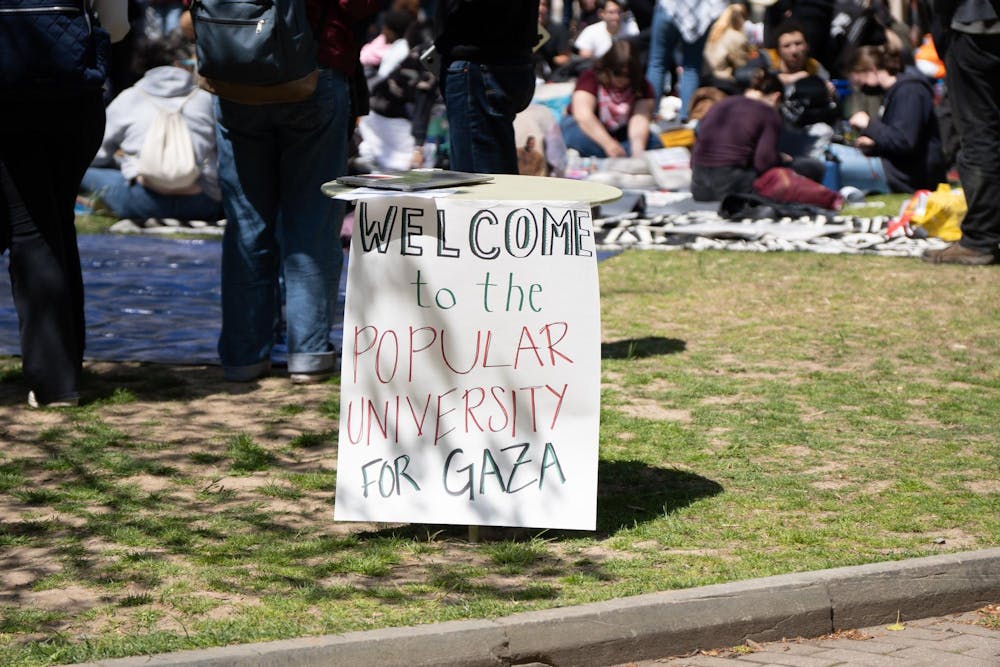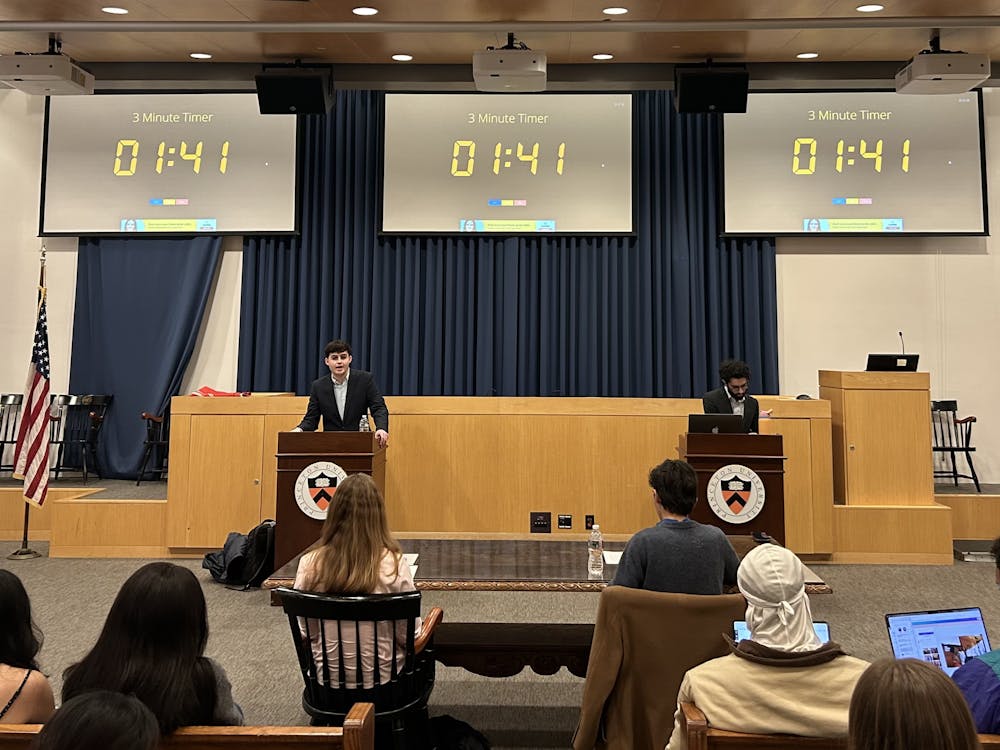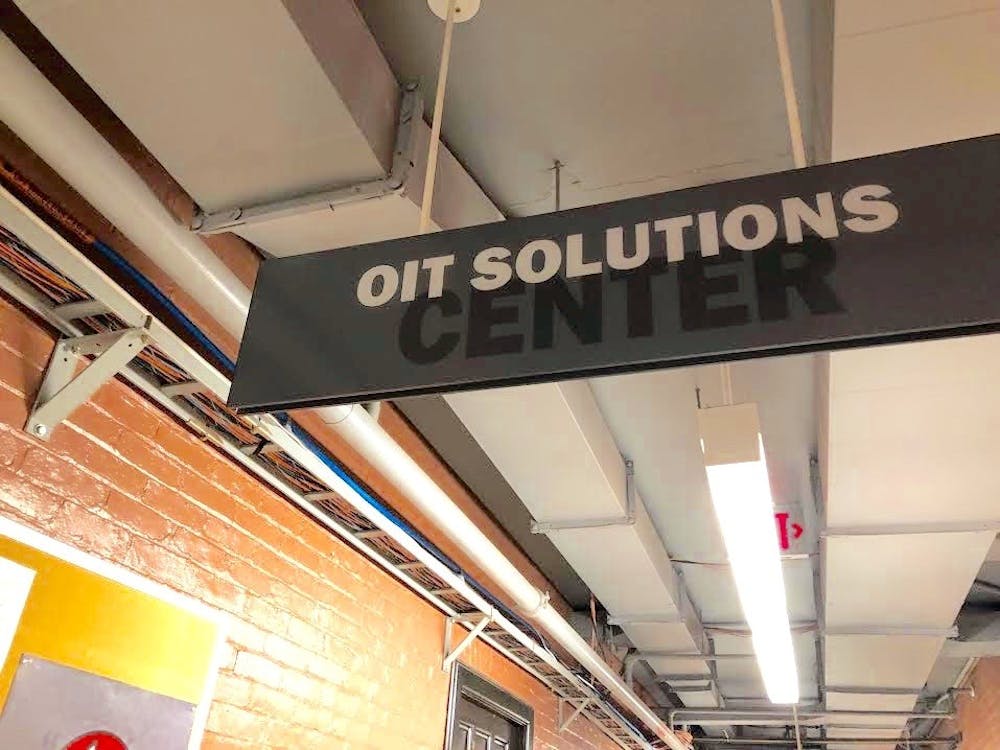The following is a guest submission and reflects the author’s views alone. For information on how to submit a piece to the Opinion section, click here.
On April 25, at 7 a.m. — after 201 days of genocide — students at Princeton University established a “Gaza Solidarity Encampment” to protest the University’s role in funding the brutal war on the Palestinian people in Gaza. Princetonians joined a widespread movement across the nation, standing in solidarity with Palestinians and Indigenous communities, advocating for their right to thrive on their ancestral lands. This collective action echoes my vision of a future for a shared land, fostering coexistence and dialogue among people of varied backgrounds and faiths.
But, despite attempts to imagine and create peace, protesters across the country are facing police aggression and arrest. As Vice President for Campus Life W. Rochelle Calhoun’s email to the University community indicates, “Any individual involved in an encampment, occupation, or other unlawful disruptive conduct who refuses to stop after a warning will be arrested and immediately barred from campus.” Intimidation tactics like this have not successfully silenced protesters. Despite the threat of institutional violence and the possibility of eviction from on-campus dormitories, students and protesters across the country continue marching, occupying public space, and chanting.
But whether knowingly or not, the University is perpetuating the false belief that pro-Palestinian protesters are violent and that advocating for the liberation of Palestinians is antisemitic. In her email, Calhoun stated that encampments like the ones we are witnessing are “inherently unsafe,” which I read as labeling the peaceful protests and the anti-Zionist rhetoric that student protestors employ as dangerous. Nothing could be farther from the truth. As Professor Tehseen Thaver said during yesterday’s protest, “The intimidation of your own students has much less to do with the concern for law and order and everything to do with gagging the space both political and physical for resisting ... the violence of a very particular modern nation state.”
Students across the United States are establishing encampments in solidarity with Gaza, spaces known as “Liberated Zones.” These students are part of a larger movement across the United States which is advocating for the divestment of our government and of our institutions from Israel and its genocidal war in Gaza. More broadly, this pro-peace movement is about imagining a different kind of future for Palestinians. I see this future as one in which Palestinians can be part of a state that accepts them as equal, which will return to them the land that Zionist colonists stole, a practice that settlers in the West Bank continue to participate in to this day. This is a vision of peace and safety for all people, rather than a vision of one people’s rights being established over the rights of another. Joining pro-Palestinian demonstrations, Jews in the U.S. as well as across the world have rejected the association of their faith with Zionism in support coexistence and peace. In New York, thousands participated in a Seder celebration that advocated for the end of aid to Israel.
Protesters are fighting for divestment from Israel, disclosure, and dropping charges from students. Personally, I believe that this movement simultaneously emphasizes the need for the right of Palestinians and of Indigenous people more broadly to be able to access the resources of their ancestral lands and to be given the right to live on this land and to flourish. The vision and existence of a liberated Palestinian nation could mean the transformation from the current political reality into a shared multi-ethnic and multi-religious state. These aspirations are reminiscent of a past in which — as Michelle Campos argues in “Ottoman Brothers: Muslims, Christians, and Jews in Early 20th Century Palestine” — Jews, Muslims, and Christians lived together before the onset of European colonial domination. To me, the work that pro-Palestine protestors at Princeton, across the U.S., and abroad are fighting for can be viewed as a part of a much larger dream of liberation from the constraints of modern ethnonationalism.
May the Princeton University leadership recognize that our academic culture is changing. May the Princeton University leadership divest from the war, get with the times, and partake in the people’s movement for justice, freedom, and peace.
Nura Sophia Liepsner is a scholar of religious studies and PhD Candidate at Princeton’s Department of Religion. They can be reached at liepsner[at]princeton.edu.








